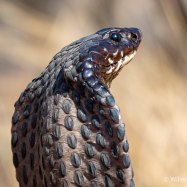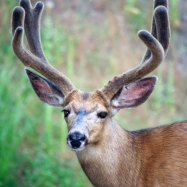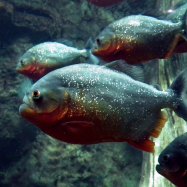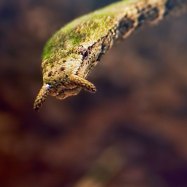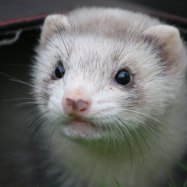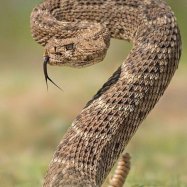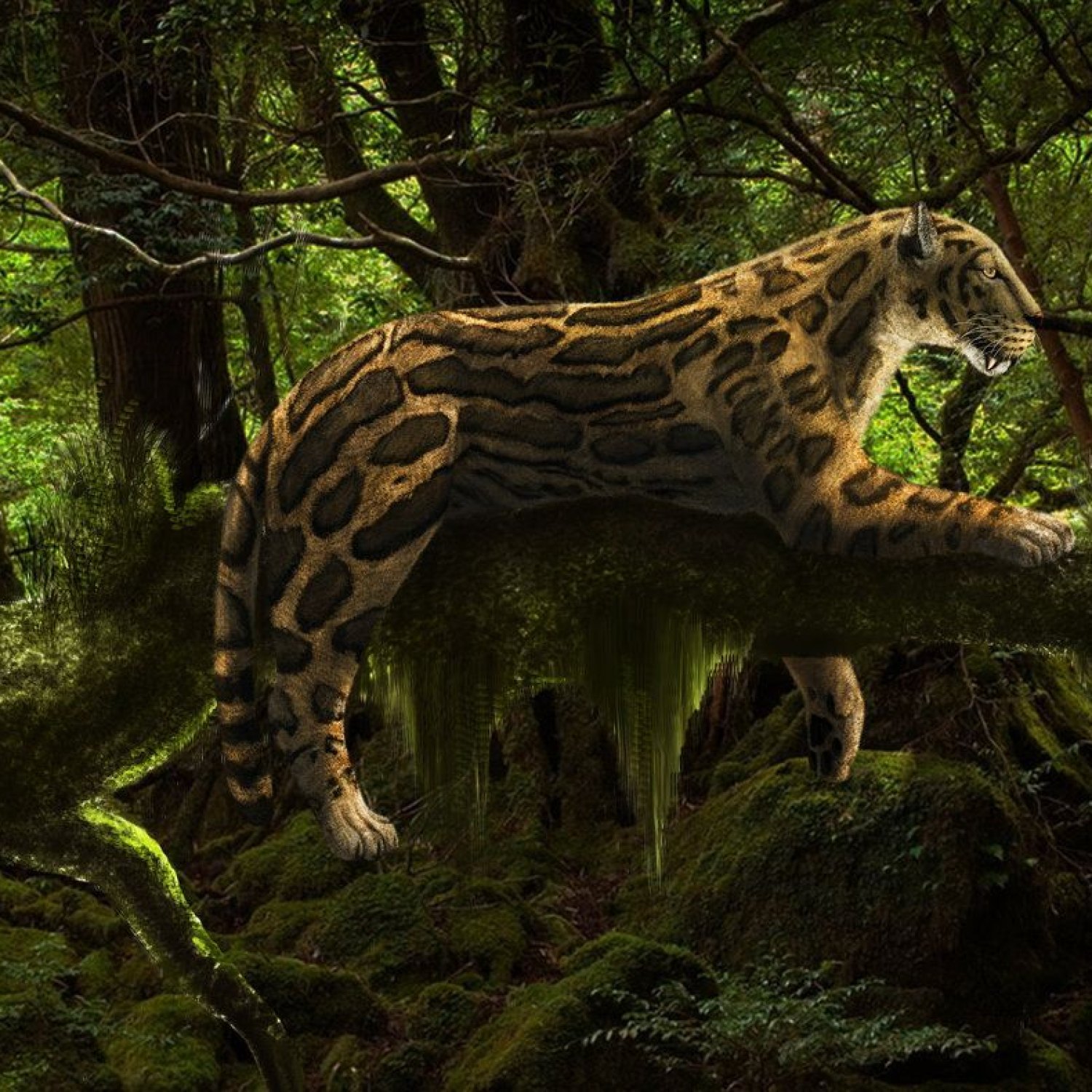
Dinofelis
Approximately 2 meters
Dinofelis was an ancient feline, roughly 2 meters in length, with a body shape similar to modern-day big cats. Belonging to the Felidae family, this prehistoric predator's exact location is unclear. However, it is believed to have lived during the Pliocene and Pleistocene periods. #Dinofelis #prehistoriccat #Felidaefamily #ancientpredator
Animal Details Summary:
Common Name: Dinofelis
Kingdom: Animalia
Habitat: Woodlands, grasslands, and savannas
The Enigmatic Dinofelis: A Carnivorous Feline of Prehistoric Times
Nature has always presented us with a variety of fascinating creatures that have roamed the earth long before the dawn of human existence. One such creature is the Dinofelis, a powerful and deadly predator that ruled the African savannas millions of years ago. Despite its incredible abilities, this feline species has long been forgotten and replaced by more well-known carnivorous animals like lions and tigers. However, its existence is still a mystery to many, making it a subject of curiosity and fascination among scientists and researchers Dinofelis.Just like many other prehistoric animals, Dinofelis got its name from the Greek language, with "dino" meaning "terrible" and "felis" meaning "cat." This name, which loosely translates to "terrible cat," aptly describes the fearsome nature of this creature. Its scientific name, Dinofelis, is also its common name, making it easy to identify.
As an avid animal lover, it is natural to be curious about the features, behavior, and habitat of the Dinofelis. In this article, we will take a deep dive into the world of this ancient feline, exploring its physical characteristics, behavior, and its significance in the natural world.
Ancient Feline in the Animal Kingdom
The Dinofelis belongs to the Animalia kingdom, which includes all multi-cellular organisms that are capable of independent movement, respiration, and nutrition. It also belongs to the Chordata phylum, which includes animals with a notochord, a long, flexible rod that runs down the length of their body.In the class Mammalia, Dinofelis is classified as a mammal, meaning it is a warm-blooded vertebrate with hair, mammary glands, and a four-chambered heart. Its order, Carnivora, includes all flesh-eating mammals, and its family, Felidae, is known for its carnivorous and predatory nature Diving Bell Spider.
A Natural Habitat and Feeding Habits
The Dinofelis was a widespread species, with fossils found in Africa, Europe, Asia, and North America. However, its specific country or location of origin is still unknown. Although its habitat has not been specified, it is believed to have inhabited woodlands, grasslands, and savannas during its existence.Being a carnivore, the Dinofelis had sharp teeth, powerful jaws, and retractable claws, making it an excellent predator. Its diet would consist mainly of large mammals such as antelopes, deer, and wild pigs. Its hunting method was similar to modern-day big cats, involving stealth, agility, and ambush attacks. Its body shape was also similar to modern-day big cats, with a slim, muscular body, and long legs for speed and agility.
The Physical Characteristics of Dinofelis
As mentioned earlier, Dinofelis was a formidable predator, with physical characteristics similar to those of modern-day big cats. It was approximately 2 meters in length, making it slightly smaller than a modern-day lion or tiger. However, its size did not determine its ability to hunt and kill prey.One striking feature of Dinofelis was its skull, which was larger and more robust in proportion to its body size compared to modern-day cats. It had strong jaws and sharp teeth, indicating its predatory nature. Additionally, this feline had a short tail and retractable claws, characteristics shared by modern-day cats.
Another interesting aspect of Dinofelis' physical appearance was its coloration. Unfortunately, due to a lack of fossil evidence, the color of its coat remains unknown. However, based on its predatory instincts and natural habitat, it is believed to have had a camouflage-like coating for blending in with its surroundings during hunting.
The Significance of Dinofelis in the Natural World
The Dinofelis was neither the biggest nor the most dominant species in its time. However, it played a vital role in the food chain as a top predator. This ancient feline was crucial in maintaining the balance of the ecosystem, controlling the population of herbivores and preventing the overgrazing of vegetation.Apart from its ecological significance, the Dinofelis also holds immense scientific importance. Its fossils have provided scientists with insights into the evolution of cats and their behavior, as well as the environment in which they lived. The study of Dinofelis fossils has also contributed to our understanding of the prehistoric world and the changes that have occurred over millions of years.
The Fate of Dinofelis
Unfortunately, the Dinofelis and other species of felines from the same period vanished from the earth approximately two million years ago. However, scientists still do not have a clear understanding of the cause of its extinction. Some theories speculate that it could be due to competition from more advanced predators or changes in its environment. Whatever the cause, the Dinofelis remains an enigmatic creature that continues to intrigue both scientists and animal lovers alike.Conclusion
The Dinofelis may be long gone, but its legacy lives on through the study of its fossils. This ancient feline's physical characteristics, behavior, and ecological significance prove its importance in the natural world and its contribution to our understanding of animal evolution. Its existence also serves as a reminder of the ever-changing environment and the vulnerability of all living creatures. As we uncover more information about these prehistoric animals, we gain a deeper appreciation for the diverse and fascinating creatures that roamed the earth before us.

Dinofelis
Animal Details Dinofelis - Scientific Name: Dinofelis
- Category: Animals D
- Scientific Name: Dinofelis
- Common Name: Dinofelis
- Kingdom: Animalia
- Phylum: Chordata
- Class: Mammalia
- Order: Carnivora
- Family: Felidae
- Habitat: Woodlands, grasslands, and savannas
- Feeding Method: Carnivorous
- Geographical Distribution: Africa, Europe, Asia, and North America
- Country of Origin: Not specified
- Location: Not specified
- Animal Coloration: Not specified
- Body Shape: Similar to modern-day big cats
- Length: Approximately 2 meters
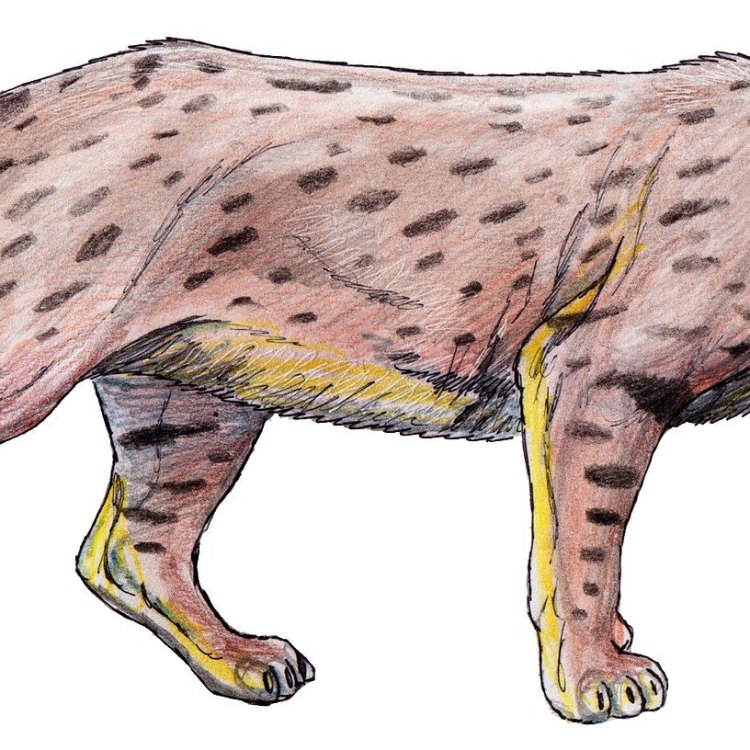
Dinofelis
- Adult Size: Large
- Average Lifespan: Unknown
- Reproduction: Sexual
- Reproductive Behavior: Not specified
- Sound or Call: Unknown
- Migration Pattern: Unknown
- Social Groups: Unknown
- Behavior: Unknown
- Threats: Climate change, habitat loss, competition with other carnivores
- Conservation Status: Extinct
- Impact on Ecosystem: Unknown
- Human Use: None
- Distinctive Features: Powerful build, retractable claws
- Interesting Facts: Dinofelis is a prehistoric cat genus that existed from about 5 million to 1.2 million years ago. It was similar in size and shape to modern-day big cats and had retractable claws like modern cats. It is believed to have been an ambush predator, using its strong build and agility to bring down prey. The exact behavior and characteristics of Dinofelis are not well known due to the limited fossil evidence available.
- Predator: Unknown
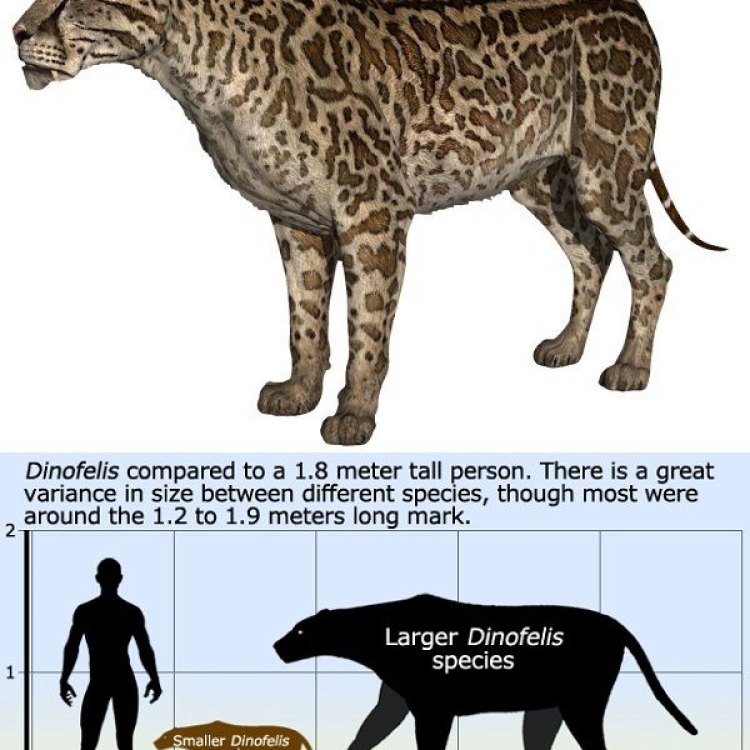
Dinofelis
The Enigmatic Prehistoric Cat: Dinofelis
When we think of big cats today, we often picture the majestic lions, powerful tigers, or agile cheetahs. But what if I told you that there was a prehistoric cat that was just as formidable, if not more? Meet Dinofelis, a fascinating feline that roamed the earth millions of years ago.Dinofelis, which means "terrible cat," was a genus of prehistoric cats that existed from about 5 million to 1.2 million years ago PeaceOfAnimals.Com. This large cat has a similar size and build to modern-day big cats, with an average adult size ranging from 4.5 feet to 6.5 feet in length and weighing around 200 pounds. Its powerful build and muscular body suggest that it was a formidable predator in its time.
But what sets Dinofelis apart from other prehistoric cats and even modern cats are its retractable claws. Similar to the big cats we know today, Dinofelis had retractable claws that they used for hunting and climbing. These sharp and powerful claws were a crucial tool in bringing down prey and possibly even defending itself from other predators.
Despite its impressive features, there are still many unknowns about Dinofelis due to the limited fossil evidence available. However, what we do know about this enigmatic prehistoric cat is still enough to capture our imagination and spark curiosity about its behavior and characteristics Dalmatian.
So, let's explore what we do know about Dinofelis and uncover some of its captivating features and facts.
The Behavior and Characteristics of Dinofelis
The exact behavior and characteristics of Dinofelis are still a mystery to us. However, based on its physical features, we can infer some of its behavior as an apex predator.The strong and robust build of Dinofelis suggests that it was well adapted for hunting large prey. Its powerful jaw, sharp teeth, and long retractable claws gave it a clear advantage in bringing down prey. It is believed that Dinofelis was an ambush predator, using its agility and powerful build to surprise and take down its prey.
One of the most distinctive features of Dinofelis was its retractable claws, like modern-day cats. These retractable claws allowed Dinofelis to keep them sharp and concealed when not in use, giving them an edge in hunting and climbing trees. This feature was not seen in any other prehistoric cat, making Dinofelis a unique species in the feline family.
Apart from its physical characteristics, we have very little information about the social behavior and migration patterns of Dinofelis. It is believed that Dinofelis was a solitary animal, only coming together during the mating season. They were also thought to be nomadic and could have migrated depending on the availability of food and water.
Unfortunately, due to the limited fossil evidence, we do not know much about the reproductive behavior and sound or call of Dinofelis.
Threats and Conservation Status
Like many other prehistoric species, Dinofelis became extinct millions of years ago. However, it was not due to natural causes but rather due to human impact on the environment.Climate change, habitat loss, and competition with other carnivores are believed to be the main factors contributing to the extinction of Dinofelis. As the climate changed, the environment that Dinofelis thrived in also changed, making it difficult for the species to survive. Human activities, such as hunting and habitat destruction, also played a significant role in the decline of Dinofelis populations.
Sadly, not enough was done to preserve and protect this majestic creature, leading to its extinction. The loss of such a unique and fascinating species is a stark reminder of the negative impact humans can have on the environment and the importance of conservation efforts.
The Impact of Dinofelis on the Ecosystem
The exact impact of Dinofelis on the ecosystem is unknown due to the limited research on this species. However, as an apex predator, Dinofelis would have played a crucial role in maintaining the balance of the ecosystem. As a top predator, it would have controlled the population of its prey, preventing any one species from dominating the environment.The disappearance of Dinofelis from the ecosystem could have had a ripple effect on the food chain and potentially caused imbalances in the ecosystem. This further highlights the importance of preserving and protecting species to maintain a healthy and sustainable ecosystem.
Interesting Facts about Dinofelis
Apart from its distinctive features and mysterious behavior, there are a few interesting facts about Dinofelis that make it stand out even more.Did you know that Dinofelis is not a direct ancestor of modern-day cats? While they share some characteristics, Dinofelis branched off from the feline family tree millions of years ago and is not a direct relative of any modern cat species.
Another interesting fact about Dinofelis is that its fossils were first discovered in China in the early 1900s. However, it wasn't until the 1930s that the fossils were fully described and named by the famous paleontologist, Louis Leakey.
The Legacy of Dinofelis
Although Dinofelis went extinct millions of years ago, its legacy lives on in the form of fossils that have been discovered worldwide. These fossils have provided valuable insights into the evolution of felines and the role that Dinofelis played in the ecosystem.By studying Dinofelis, scientists and researchers have gained a better understanding of the prehistoric world and how species adapted and evolved to survive in changing environments. The discoveries made about Dinofelis also shed light on the delicate balance of the ecosystem and the impact that human activities can have on the environment and its inhabitants.
In Conclusion
Dinofelis may no longer roam the earth, but its presence is still felt through the fossils and discoveries made about this fascinating prehistoric cat. Its powerful build, retractable claws, and mysterious behavior continue to intrigue scientists and capture the imagination of people worldwide.But perhaps the most important takeaway from the story of Dinofelis is the importance of preserving and protecting our environment and the species that inhabit it. As we continue to learn about Dinofelis and its impact on the ecosystem, let it serve as a reminder of the delicate balance of nature and the vital role that each species plays in maintaining it.

The Enigmatic Dinofelis: A Carnivorous Feline of Prehistoric Times
Disclaimer: The content provided is for informational purposes only. We cannot guarantee the accuracy of the information on this page 100%. All information provided here may change without prior notice.

